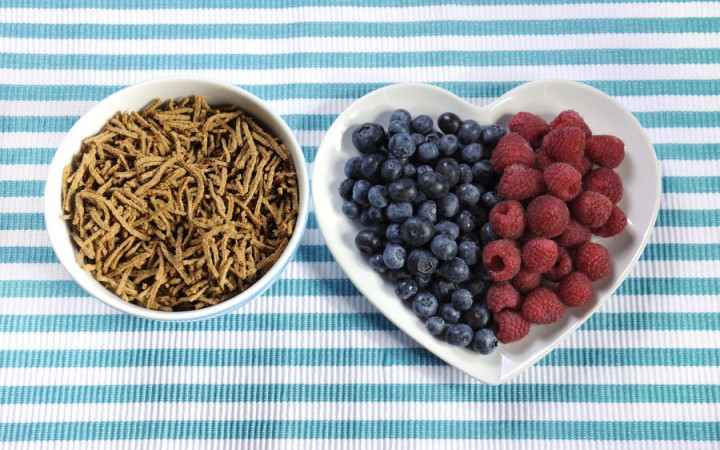Today’s Wonder of the Day was inspired by Melissa. Melissa Wonders, “Why is fiber good for digestion?” Thanks for WONDERing with us, Melissa!
If you watch much television or read many magazines, you probably see and hear all sorts of health advice. Don't eat that! Watch your calories! Cut out fat! Stay away from sugar! With all those voices surrounding you telling you what not to eat, you might start to WONDER what you can eat that would be good for you.
One thing a dietician would probably tell you to eat more of is fiber. Of course, the mere mention of the word fiber might conjure up images of eating tree bark or pounds of green vegetables. Making sure your diet is high in fiber is good advice, though, and it can be delicious, too!
Fiber is the indigestible part of plant foods that help move food through the body. There are two types of fiber; soluble (dissolves in water) and insoluble (does not dissolve in water). The main sources of fiber are the plants we eat, including fruits, vegetables, legumes, and grains. Some good examples of high-fiber foods are:
- whole-grain cereals and breads
- fruits such as apples, bananas, berries, and oranges
- green vegetables such as spinach, broccoli, and peas
- legumes such as soybeans and lentils
Eating high-fiber foods has many health benefits. For example, high-fiber diets tend to reduce cholesterol levels while also preventing certain diseases, such as diabetes and heart disease. High-fiber diets can also help you lose weight, since fiber has no calories and high-fiber foods discourage overeating because they're more filling.
Another health benefit of a high-fiber diet is that fiber, especially insoluble fiber, regulates bowel function. While this benefit might not apply as much to younger persons, older adults often use high-fiber diets to avoid constipation.
If you're curious about whether a food contains fiber, just check its nutritional label. The amount of fiber will usually be listed in the section that gives details about carbohydrate content. Dieticians consider foods with five grams or more of fiber per serving to be "high" in fiber, while foods with 2.5-4.9 grams of fiber per serving are "good" sources of fiber.
Unfortunately, studies show that most Americans don't eat enough fiber. So how much is enough? If you're a growing girl, you need at least 20-25 grams of fiber each day. Growing boys need at least 30-40 grams on a daily basis.
If you need to add more fiber to your diet, you can make small changes that can have big effects. For breakfast, try oatmeal or a whole-grain cereal with fresh fruit. For lunch and dinner, use whole-grain options for foods such as breads, pastas, and tortillas. When it's time to snack, choose high-fiber fresh fruits or almonds. And last, but not least, eat your green vegetables!




